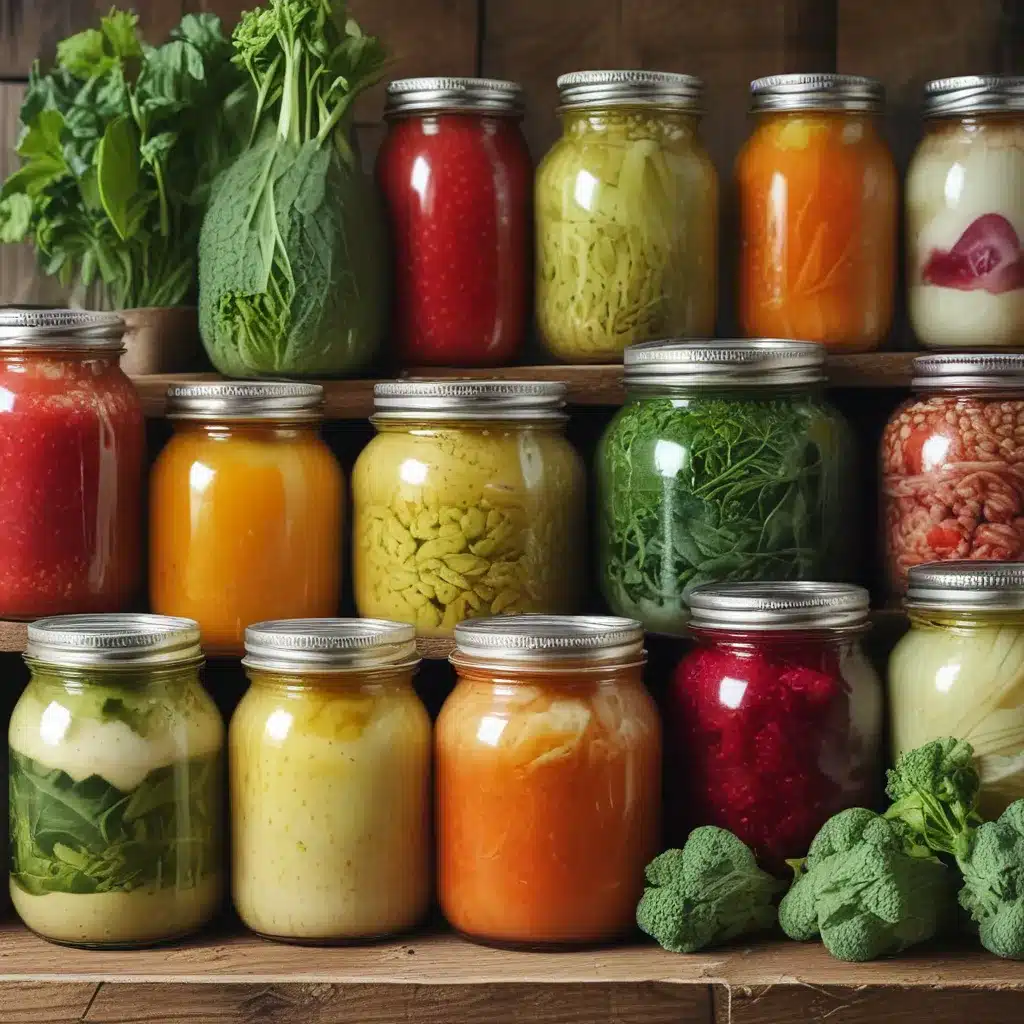
The Fermentation Frontier
As I stand in my kitchen, surrounded by the bountiful harvest from my local community-supported agriculture (CSA) service, I can’t help but feel a sense of excitement. These vibrant fruits and vegetables are more than just nourishment – they represent a world of culinary possibilities waiting to be explored. And at the heart of this exploration lies the ancient art of fermentation.
Fermentation has been a cornerstone of food preservation for centuries, allowing us to unlock the hidden flavors and health benefits of our favorite produce. It’s a process that has fascinated me for years, ever since I stumbled upon a book on wild fermentation and discovered the transformative power of microbes.
Mastering the Microbial Magic
Growing up, I’ll admit, I was a bit skeptical of fermented foods. The idea of intentionally allowing bacteria to thrive in my food just seemed… well, a little unsavory. But then I learned about the incredible diversity of beneficial microbes that inhabit the world of fermentation, and my perspective shifted entirely.
These microscopic allies aren’t just harmless bystanders – they’re the true architects of flavor, texture, and nutritional value. Take the humble cabbage, for example. When you submerge it in a brine and let nature take its course, the lactobacillus bacteria get to work, converting the sugars into lactic acid. This not only preserves the cabbage, but also transforms it into the tangy, crunchy delight we know as sauerkraut.
And the benefits don’t stop there. Fermented foods are teeming with probiotics – strains of gut-friendly bacteria that can bolster our immune systems, aid digestion, and even improve mental well-being. It’s like unlocking a whole new level of nourishment from the very same ingredients we’d normally toss into a salad or roast in the oven.
Preserving the Bounty
As I unpack the latest CSA haul, I can’t help but feel a twinge of excitement. Each crate is a treasure trove of seasonal delights, from juicy tomatoes to crisp cucumbers to earthy beets. And while I love the idea of simply enjoying these fruits and veggies in their raw, unadulterated glory, I know that fermentation offers a way to extend their shelf life and explore new culinary frontiers.
Research shows that community-supported agriculture (CSA) services play a vital role in strengthening local food economies, providing fresh, nutrient-dense produce to communities while supporting small-scale farmers. But with the abundance of fresh produce comes the challenge of ensuring nothing goes to waste. And that’s where fermentation steps in as a game-changer.
By transforming my CSA bounty into a rainbow of fermented delights, I can preserve the flavors of the season and enjoy them long after the harvest has passed. Imagine crunchy dill pickles, tangy kimchi, or a rainbow of fermented hot sauces – all made from the very same ingredients that once graced my kitchen counter.
Fermentation Fundamentals
As I dive deeper into the world of fermentation, I’ve discovered that the process is actually incredibly straightforward. At its core, it’s all about creating the right conditions for beneficial bacteria to thrive. And the beauty is, you don’t need a degree in microbiology to get started.
The basic formula is simple: take your chosen vegetable or fruit, submerge it in a salt brine, and let it sit. The lactobacillus bacteria naturally present on the produce will get to work, converting the sugars into lactic acid. This not only preserves the food, but also gives it a distinctive tangy flavor.
But the fun doesn’t stop there. You can get creative with your ferments, adding herbs, spices, and even other fruits and vegetables to create endless flavor combinations. Mulberries, for example, make a fantastic addition to a fermented fruit chutney, adding a sweet-tart twist to the mix.
And the best part? Fermentation is an incredibly forgiving process. As long as you keep your produce submerged in the brine, you’re well on your way to a successful ferment. No precise measurements, no tricky techniques – just a little patience and a lot of culinary curiosity.
The Fermented Frontier
As I stare at the jars lining my kitchen shelves, each one a testament to the power of fermentation, I can’t help but feel a sense of wonder. Who knew that by simply adding a little salt and time, I could transform these humble CSA offerings into such a diverse array of flavors and textures?
From the tangy crunch of dill pickles to the fiery kick of fermented hot sauce, the possibilities are endless. And as I take a bite of each ferment, I’m reminded of the deep connection between the land, the microbes, and the nourishment they provide.
But fermentation isn’t just about preserving the bounty of the season – it’s about unlocking a whole new world of culinary exploration. By harnessing the power of fermentation, I can elevate the flavors of my CSA produce, creating unique and delicious dishes that celebrate the essence of the ingredients.
So as I plan my next fermentation project, I can’t help but feel a sense of excitement. Who knows what delicious surprises await as I continue to unlock the secrets of this ancient art? One thing’s for sure: with fermentation at my side, I’ll never look at my CSA haul the same way again.



